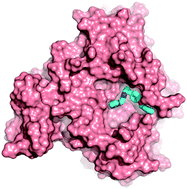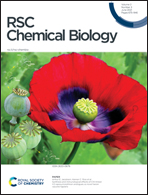Mechanisms of allosteric and mixed mode aromatase inhibitors†
Abstract
Aromatase (CYP19) catalyzes the last biosynthetic step of estrogens in mammals and is a primary drug target for hormone-related breast cancer. However, treatment with aromatase inhibitors is often associated with adverse effects and drug resistance. In this study, we used virtual screening targeting a predicted cytochrome P450 reductase binding site on aromatase to discover four novel non-steroidal aromatase inhibitors. The inhibitors have potencies comparable to the noncompetitive tamoxifen metabolite, endoxifen. Our two most potent inhibitors, AR11 and AR13, exhibit both mixed-type and competitive-type inhibition. The cytochrome P450 reductase-CYP19 coupling interface likely acts as a transient binding site. Our modeling shows that our inhibitors bind better at different sites near the catalytic site. Our results predict the location of multiple ligand binding sites on aromatase. The combination of modeling and experimental results supports the important role of the reductase binding interface as a low affinity, promiscuous ligand binding site. Our new inhibitors may be useful as alternative chemical scaffolds that may show different adverse effects profiles than current clinically used aromatase inhibitors.

- This article is part of the themed collection: Exploring proteins and their interactions


 Please wait while we load your content...
Please wait while we load your content...